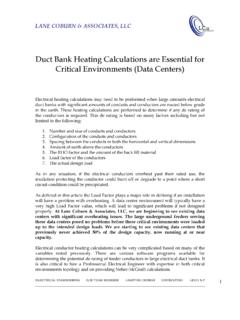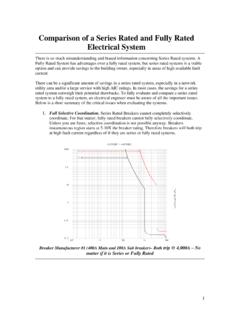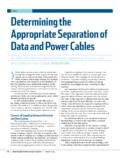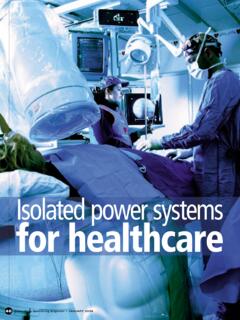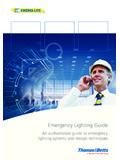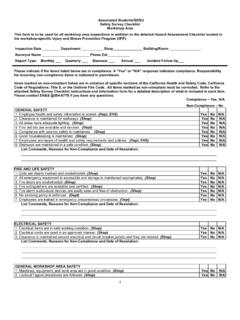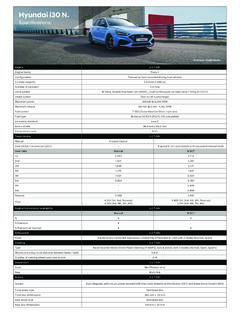Transcription of IBC and Exterior Lighting - Lane Coburn
1 Keith Lane, , RCDD/NTS, LC, LEED 1 The IBC and Exterior Lighting We have recently been involved in a number of projects that are incorporating the IBC (International Building Code). In the State of Washington, all projects that obtain building permits after July 1, 2004 will have to follow the IBC. Prior to July 1, 2004, all projects followed the UBC (Uniform Building Code). One significant portion of the IBC that differs from the UBC and impacts the electrical system is section 1006, Means of Egress Illumination . More specifically, Illumination emergency power; The power supply for means of egress illumination shall normally be provided by the premise s electrical supply.
2 In the event of power supply failure, an emergency electrical system shall automatically illuminate the following areas": (1): Exit access corridors, passageways and aisles in rooms and spaces which require two or more means of egress. (2): Exit access corridors and exit stairways located in buildings required to have two or more exits. (3): Exterior egress components at other than the level of exit discharge until exit discharge is accomplished for buildings required to have two or more exists. (4): Interior exit discharge elements, as permitted in Section , in buildings required to have two or more exits. (5): The portion of the Exterior exit discharge immediately adjacent to the exit discharge doorway in buildings required to have two or more exists.
3 *Exit Discharge: The portion of the means of egress system between the termination of the exit and a public way. Sections (3) & (5) as noted above have the most dramatic impact on the electrical distribution and Lighting systems. Section number (3) above will affect the egress Lighting on the roof parking lot portion of a parking garage. With the implementation of the IBC , emergency egress Lighting per IBC and the NFPA 101 (National Fire protection Agency) will be required on the roof parking lot portion of a parking garage. The IBC requires an average of 1 FC and a maximum to minimum ration of 40:1 or less. The typical parking lot does not require egress Lighting to be fed from an emergency electrical system and does not require compliance with the IBC If the parking lot is on top of a parking garage, and the AHJ follows the IBC, the emergency egress Lighting is required.
4 Keith Lane, , RCDD/NTS, LC, LEED 2 Typical parking structure that would require roof parking egress Lighting to be fed from an emergency electrical system under the provisions of the IBC. The problem with parking lot and egress issues is that a typical parking lot will be lit with a 150 W to a 250 W metal halide fixture on 15 to 25 foot poles. If the parking garage is served with an emergency generator, a quartz restrike will not typically provide the required emergency illumination on the parking surface. If the power fails, the generator will usually sense a power failure, start the engine and transfer to emergency power within 6 to 8 seconds and per the NEC, is required to transfer within 10 seconds.
5 The problem with a metal halide source is if power is interrupted, even briefly, the light will extinguish. Once extinguished, lamp cool down and re-strike time can be anywhere from 1 to 15 minutes. A new technology called an HID arc maintenance device must be utilized. An HID arc maintenance device is an auxiliary unit equipment off-line inverter product that can maintain the lamp arc in metal halide lamps to eliminate the restrike period. The combination of the emergency generator that complies with NEC and picks up emergency loads within 10 seconds and the HID arc maintenance device will provide for the required emergency illumination. The egress Lighting issue becomes much more complicated if an emergency generator is not provided with the project.
6 Unlike fluorescent light fixtures, metal halide light fixtures cannot be provided with individually mounted battery back up devices. Two potential and costly solutions to this problem would be to either provide a second fluorescent Lighting system with internal battery backup or provide a fast transfer centralized Lighting inverter system with 90 minutes of battery and provide an arc maintenance device in the metal halide light fixtures. Keith Lane, , RCDD/NTS, LC, LEED 3 Because of the limited mounting location in a parking lot and Dark Sky restriction in many communities, achieving the required emergency egress Lighting with a second Lighting system of fluorescent fixtures can be very difficult.
7 Dark Sky and other local energy codes are intended to reduce light pollution and glare and can require full cut off luminairs that allow no light above the nadir and candela at less than 10% of the rated lumen output between 80 and 90 degrees. This would prohibit any uplighting. In addition, the centralized inverter system with 90 minutes of batteries will require a significant footprint. There are also two types of inverters, interruptible systems and fast transfer systems. The interruptible systems will typically transfer within 50 ms and can be utilized for fluorescent and incandescent light sources. The fast transfer type system will transfer within 2 ms and must be used with metal halide light sources to prevent the arc from extinguishing.
8 Also, once 50 gallons of electrolytes in a non-sprinkled building or 100 gallons in a sprinkled building is reached, NFPA Chapter 52 applies which required spill control, room separation and ventilation. Section (5) above illustrates the requirement for emergency Lighting from an exit discharge to the public right of way. The typical wall mounted egress light over an exit doorway will now have to provide emergency illumination to the public right of way. The same issues pertaining to Section (3) as defined above will also apply to this section of the IBC. The typical wall mounted egress light is provided with a metal halide light source. In this situation, if a generator is provided with the project an arc maintenance device would be required to ensure proper light levels within the 10 seconds as prescribed by the NEC.
9 If there is no emergency generator, a fluorescent light fixture with an internal battery or a metal halide light fixture with a centralized inverter in addition to an arc maintenance device in the light fixtures would be required. In either case, 90 minutes of backup would be required. Another issue with Section (5) is that the public right of way could potentially be quite some distance away. If this is the case, additional light fixtures on the Exterior of the building and/or along walkways with emergency Lighting provisions may be required to obtain the minimum average foot-candles and uniformity ratios. It is important to be aware of the IBC code change, especially as it applies to the electrical distribution system.
10 These changes can be costly and must be implemented from the very beginning of the design phase. Not being aware of these IBC requirements will only cause more pain and expense during the plan review and construction phase of the project. End of Article Written By: Keith Lane, , RCDD/NTS Specialist, LC, LEED Lane Coburn & Associates, LLC.
